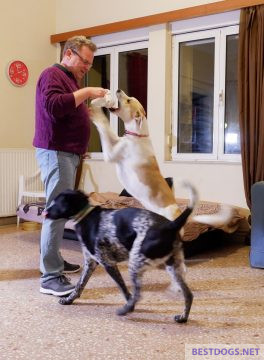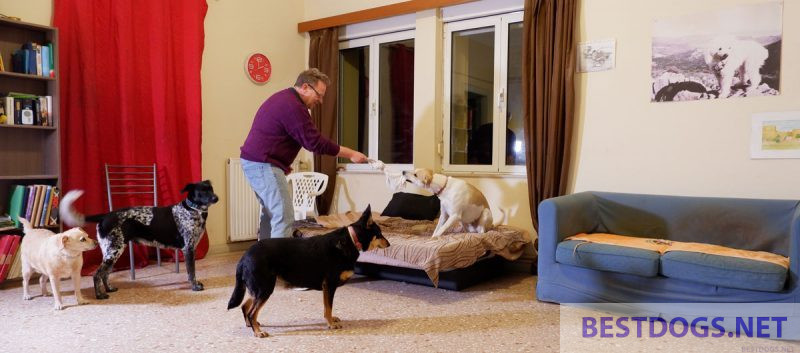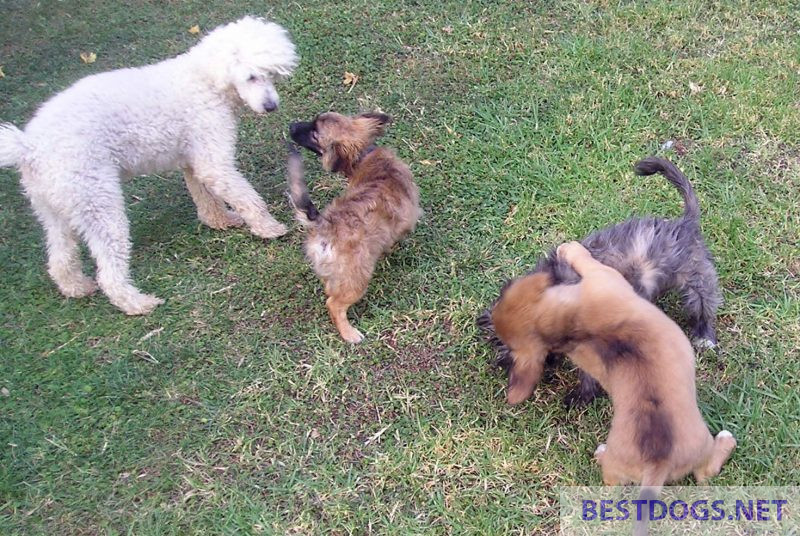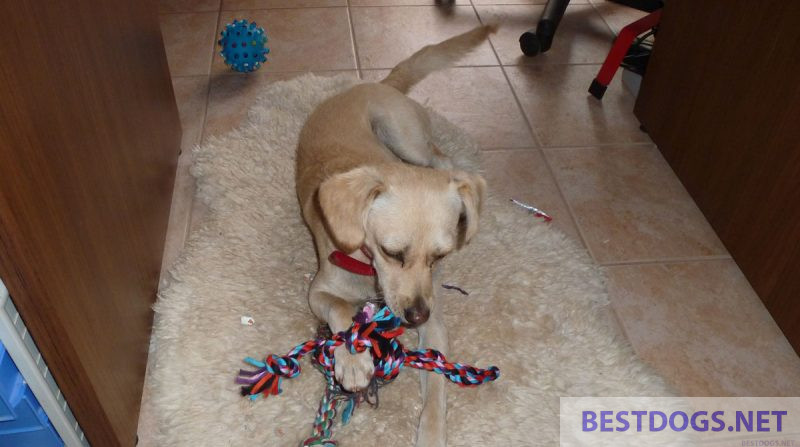Children and dogs – the children’s game.
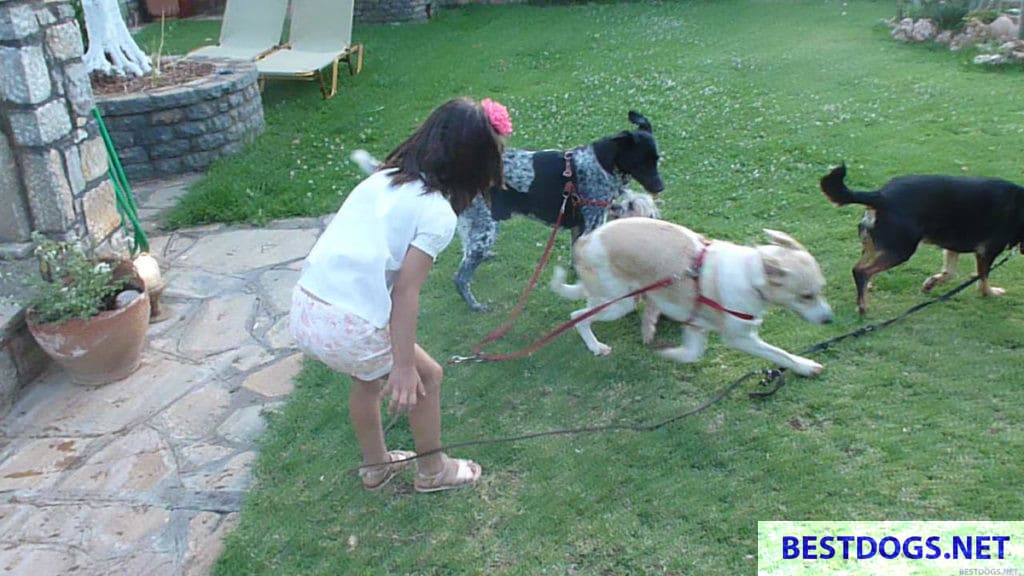

Children and dogs – the children’s game
Table of Contents
Natural behaviors
Some behaviors are so important to the survival of the canine species that they are hard-wired into the brain. Humans are able to override instinctive behaviors, as evidenced by those who go on hunger strikes. In contrast, however, in dogs, despite years of human intervention through selective breeding, certain behaviors are so ingrained in the dog’s brain that they are still present to some degree in all breeds.
If we want our dogs to become our companions, we must teach our children these behaviors so that they understand and respect them.
Dogs evolved from the predatory ancestors of wolves, which survived by hunting almost all living things. This included smaller mammals, birds, snakes, fish, insects and even earthworms.
Although selective breeding has reduced their predatory behavior, it is still part of their genetic makeup. Many of the games we play with our dogs – from ‘throwing sticks’ to ‘tug-of-war‘ – take advantage of these prey behaviors.
When circumstances allow, dogs may try to actually catch cats, squirrels, sheep or rabbits as prey. Although they are less likely to indulge in predatory behavior with animals they have been socialized with, these instincts are easily aroused by rapid movements and loud noises. However, these also happen to be two behaviors that almost constitute childhood !
A running child can trigger the chase response in a dog’s brain. This is a chemical stimulus rather than a rational thought, and many dogs become very excited and rough, exhibiting ‘hyper’ behavior by going into predator mode very quickly. This is one of the reasons why it is important to never leave a dog alone with a child.
Young children often view the family dog as a toy, and as far as they are concerned, the dog has no feelings. In addition, a heavy sprinkling of cartoon entertainment shows can convince a child that you can hit a dog on the head or under the chin, or even squeeze it into a garbage can, without risk of serious injury.
Children tend to pull dogs by the ears or tails, jump on their backs, and some children even love to scream in a sleeping dog’s ear or chase it persistently.
Even one of these actions is enough to cause the dog pain or make him feel threatened. The consequence could be that he shows defensive or aggressive behavior.
Therefore, even young children must be taught how to behave around dogs – and the same goes for the dog around children. Therefore, a responsible person must be present at all times to monitor the situation between child and dog.
Boys between the ages of five and nine are bitten by dogs five times as often as any other group of people. Their loud and physical play is clearly similar to the behaviors that young dogs exhibit during play, which often include barking, using their mouths, and biting. While snapping and biting during play between young dogs can be relatively harmless, the consequences can be much more serious if a human boy is bitten.
Therefore, if you hear screaming, banging and excited barking from the children and dogs, everyone should be calmed down immediately by the adult. The child must understand that he should play quietly with his dog, at least until they get to know each other better.
Communication with the dog
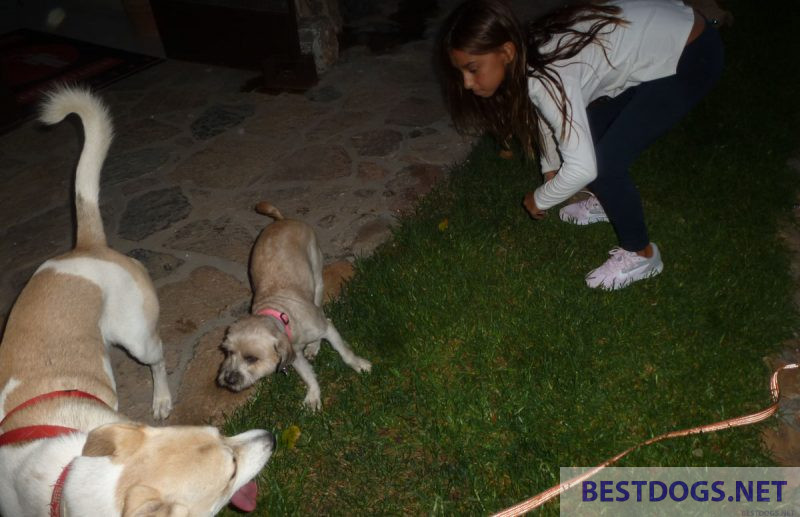
A significant part of the communication between dogs relates to the individual dog’s personal safety, personal space, and ownership of their own belongings.
One of the signals that dogs can interpret as a threat to their personal safety is direct, ‘staring’ eye contact. Unfortunately, children tend to stare intently at animals, and the dog may interpret this as a threat.
It is important for parents to explain to their children that such intense eye contact is likely to upset the dog, and therefore they should not do this.
The best way to avoid conflict is to prevent the children from acting threateningly towards the dog. Therefore, it is important that the children know the previously described signals the family dog uses to show that it is unhappy, fearful, or frustrated. If the dog freezes, stares, glares, growls, or shows its teeth, the child must immediately stop what it is doing and back off.
If the child does not stop his action, the dog may be ‘forced’ to retaliate by growling, snapping or biting to keep him away.
A large part of a dog’s genetic behavior is devoted to searching for and obtaining food. Since a considerable amount of effort goes into this, it is not difficult to imagine that a dog’s instinct to defend its food is particularly strong. This is especially true if food has ever been scarce, as may have been the case with rescue dogs that were strays.
As a result, there are many reports of children being bitten because a dog felt that the child was threatening to take his food away.
A large portion of common sense is required here. Why should a child bother the family dog when it is eating ? Many dogs clean their bowls within minutes. Therefore, the child must be educated to let the dog eat in peace until it is finished. It is necessary to make sure that the child waits until the dog has left his feeding place and the bowl has been removed before the child and dog can interact again.
Sensible advice is not to wait for the dog to become perfect, and therefore not to test it out to see what will happen if the food is taken away while it is eating.
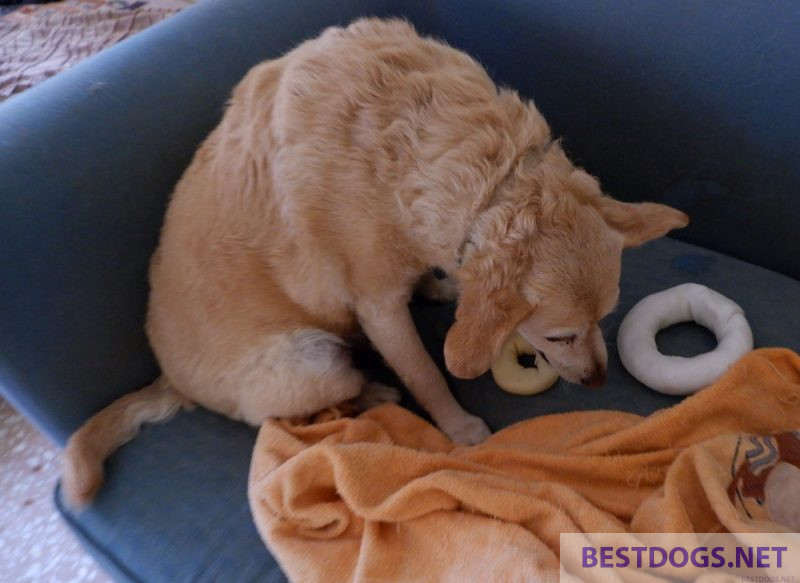
Even if it is not always true, toys can also be another cause of quarrel. Therefore, care should be taken that the child does not senselessly ‘steal’ the dog’s toys or chewing objects. Instead, the child should ask the dog to play with him in a ‘polite’ way. This is done by showing the dog another toy ‘in exchange’, which will entice him to play with the child.
Each dog has its own individual character and therefore the relationship with him must be well established before you can easily ‘take away’ something. Even if the dog harmonizes well with the people, the child should always be guided to remain ‘polite’ in dealing with the animal.
Basically, it would be a big mistake with children in the family to encourage the dog’s protective behavior, especially with regard to his food bowl or toys. If the dog shows such tendencies, behavior modification under professional guidance may be necessary.
Games between child and dog
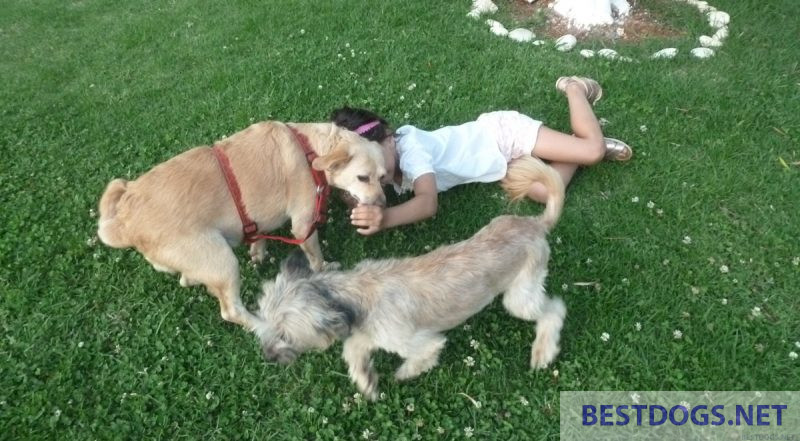
Children of kindergarten age can already complete smaller exercises with the dog under supervision. A five-year-old at this age already understands well when the reasons for a certain behavior of the dog are explained to him. On the other hand babies or children in the crawling age can have only little use of a dog and are already once glad, if they have first successes with walking attempts without being jostled.
School children on the other hand can undertake already some more with the family dog and with the common play there are already almost no restrictions more. Although dog sport clubs already allow six-year-olds to take the dog sport test, children under ten should still handle and play with the dog under adult supervision.
In the heat of the moment, the dog can quickly get carried away, and small children can hardly control it. Therefore, you should be able to intervene at any time and also feeding, walking, brushing, etc. should only be done together.
If you have a child and a dog together in the house, you also have to pay attention to the toys. For example, the dog should not be able to simply come into the child’s room to use by itself the child’s toys. Also, small children do not know naturally yet that e.g. eaten up glass marbles or bead chains in the stomach of the dog are not really helpful. So Lego bricks are educationally valuable for the little ‘human builder’, but chewed up in the dog’s mouth or intestine are extremely problematic. Likewise, nylon stockings, nylon threads and all kinds of strings are dangerous for the dog. Many puppies had already to pay with their life because of this.
Therefore, children need to know that a dog needs other toys. Therefore, the dog toys should be deposited somewhere else in the apartment in a box, where the child can pick out something to play with the dog.
The child must learn not to use under any circumstances things to play with the dog, which are poisonous for it, sharp or quickly swallowed. Instead, balls of a suitable size, scraps of cloth for pulling games, biting sausages, pulling rings and things like this must be used. It should be noted that not every dog toy is equally suitable for all dogs.
It’s a good bit less work for the adults if the child was ‘officially’ and ‘formally’ appointed ‘toy overseer’ and would be responsible for keeping his toys out of the dog’s reach.
Then all that would have to be done is to make sure that the dog’s toys are different from the children’s, because you can’t expect the dog to know the difference between his brown plush teddy bear and the daughter’s pink and white plush marsupial, because to him both are stuffed animals.
The dog should not be further confused by being given items such as old children’s toys or socks, as these resemble the things that should be ‘banned’ for him. The dog can’t see the difference, and if it starts trotting around the house with the underwear in the mouth, you have yourself to blame.
Rougher games
However, this is not an advisable game to play with a dog that you don’t really know yet, as the whole affair can quite easily degenerate into great excitement. If the dog gets very excited and starts growling, it is better to take a break and play another game.
It is certainly not advisable to allow such games between the children and dogs, as many dogs can more easily grab the toy at this height and get too close to the hands and arms.
A positive relationship
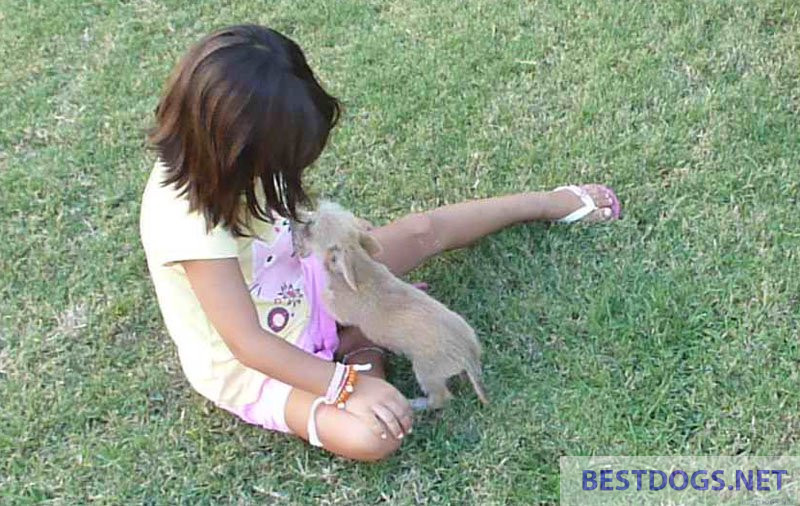
It is important that the dog builds a positive relationship with the children. This can be achieved by giving him rewards such as treats or toys to ‘positively reinforce’ the experience of being around them. If the child can also give him a treat, all the better.
However, children may be afraid of being bitten when they give the dog the treat, so they flinch away with their hand at the last second. The dog may then jump up or lunge at them to still reach the treat, which may result in the child being knocked over.
Therefore, the child should place the treat in an open palm instead of holding it in their fingers. Initially, it is helpful to place the adult’s hand under the child’s hand.
Then, if the child is still nervous, he can pass the treat to the adult, who will give it to the dog. This secondary positive reinforcement works wonderfully especially when both parties are a little nervous.
The dog can see and smell that the treat is coming from the child, but is not forced to take it from someone it is insecure about, or vice versa.
A dog’s head is often at the same height as the child’s, so many dogs appear larger and potentially scarier to an insecure child, and are also often just the right height to easily knock a child over. This underscores the importance of teaching both the child and your dog how to behave with each other in order to develop a successful relationship.
A dog new to the family can be easily frightened, so everyone needs to be very gentle with him. He has his own way of doing everything – like eating, going to the toilet, playing – from there it is important to know how he does these things and make it easy for him.
As soon as the dog comes home for the first time, children’s interactions with the dog must be supervised. They must be gently shown how to deal with the four-legged friend and what his movements and actions mean. In this way, the child will unconsciously internalize the rules of interacting with the dog.
Older children, on the other hand, will be more active in preparing for the newcomer and will internalize the rules more easily.
If you want the new dog to be a part of the child’s life, conversation and planning are necessary to make dog ownership a positive experience for everyone. A child who learns to care for a dog and treats it kindly and patiently is well on the way to becoming a reliable and sensible adult who is a pleasure to be with.
Summary
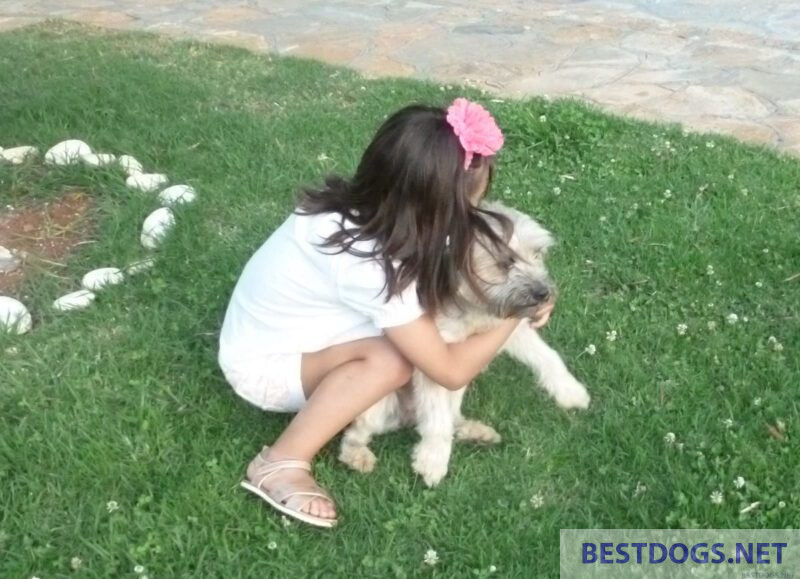
Children and dogs often form a unique and special bond, providing companionship, learning opportunities, and mutual enjoyment. Here are several benefits and considerations for families with children and dogs:
Benefits
1. Companionship: Dogs offer unconditional love and friendship, which can help children feel secure and valued. They can be a constant companion through various stages of childhood.
2. Responsibility: Caring for a dog teaches children responsibility. Tasks like feeding, grooming, and walking the dog help children learn about commitment and routine.
3. Emotional Development: Interaction with dogs can enhance children’s emotional intelligence. They learn empathy, compassion, and how to read non-verbal cues.
4. Physical Activity: Dogs encourage physical activity through play and walks, promoting a healthy lifestyle for both the child and the dog.
5. Social Skills: Owning a dog can improve a child’s social skills. It provides common ground for conversations and helps in making new friends, as dogs are often a social bridge.
6. Stress Relief: Dogs can be comforting during stressful times. The act of petting a dog can release oxytocin, which reduces stress and promotes happiness.
Considerations
1. Safety: It’s crucial to teach children how to interact safely with dogs. This includes understanding dog body language, respecting the dog’s space, and learning how to approach and pet dogs appropriately.
2. Supervision: Always supervise interactions between young children and dogs to prevent accidental injuries to both the child and the dog.
3. Training: Ensure that the dog is well-trained. Obedience training is essential for the dog’s safety and for harmonious living with children.
4. Time Commitment: Dogs require a significant time commitment. Families need to consider if they can meet the dog’s needs for exercise, training, and companionship.
5. Allergies: Some children might be allergic to dogs. It’s important to ensure no one in the household has severe allergies to pet dander before getting a dog.
6. Breed Selection: Some dog breeds are more suitable for families with children due to their temperament. Researching and selecting the right breed can make a big difference in the relationship between the dog and the children.
Tips for a Positive Relationship
1. Early Socialization: Introduce dogs to children and various situations early on to ensure they are well-adjusted and comfortable around kids.
2. Educate Children: Teach children about dog care, behavior, and the importance of treating dogs with kindness and respect.
3. Set Boundaries: Establish clear boundaries for both the child and the dog. For example, teach the child not to disturb the dog while it’s eating or sleeping.
4. Interactive Play: Engage in activities that both the dog and the child enjoy, such as fetch, agility courses, or simple training games. This strengthens their bond.
5. Routine: Maintain a consistent routine for the dog. Dogs thrive on routine, and it helps them feel secure and less anxious.
By fostering a loving and respectful relationship between children and dogs, families can create a nurturing environment that benefits both the child and the pet.


